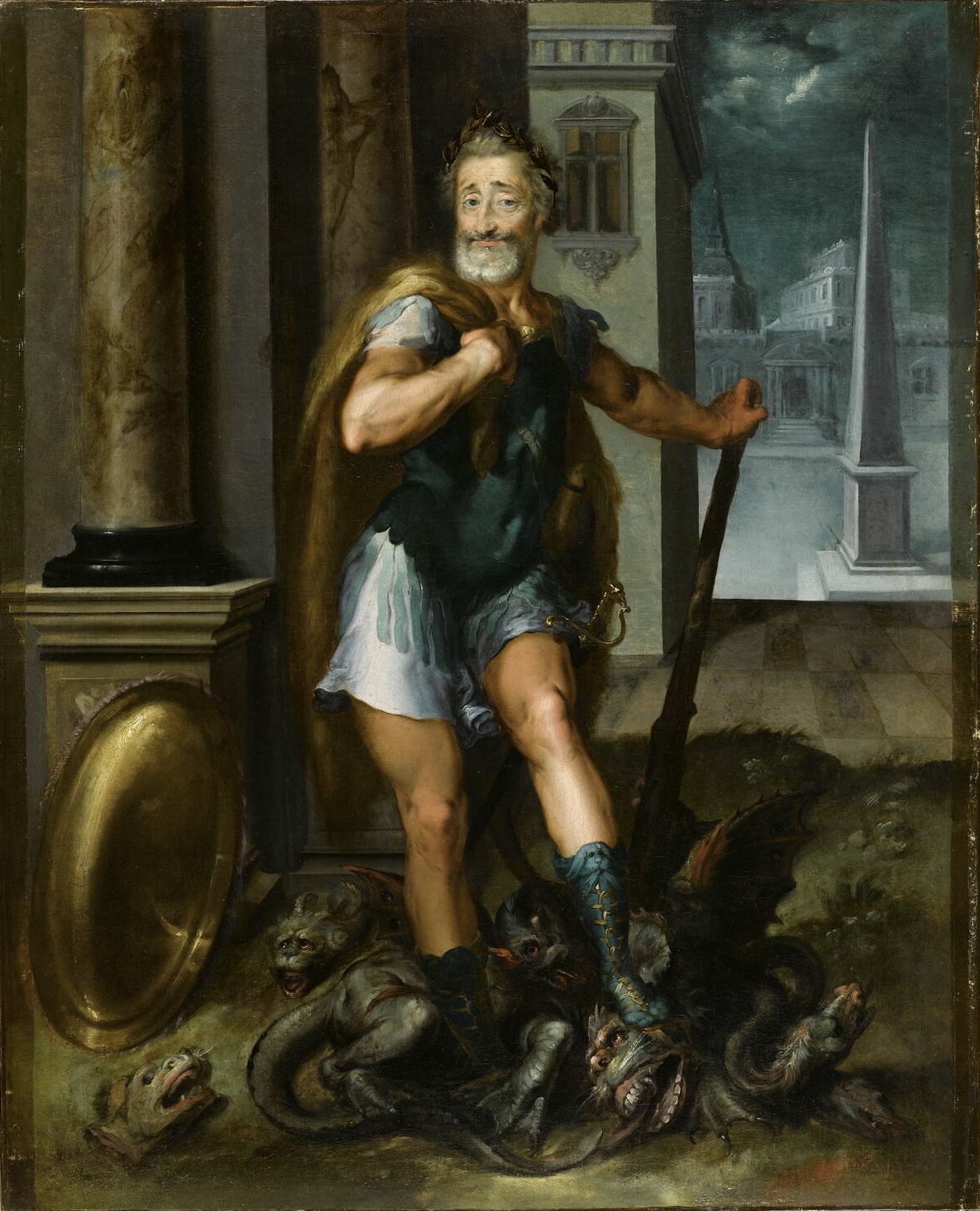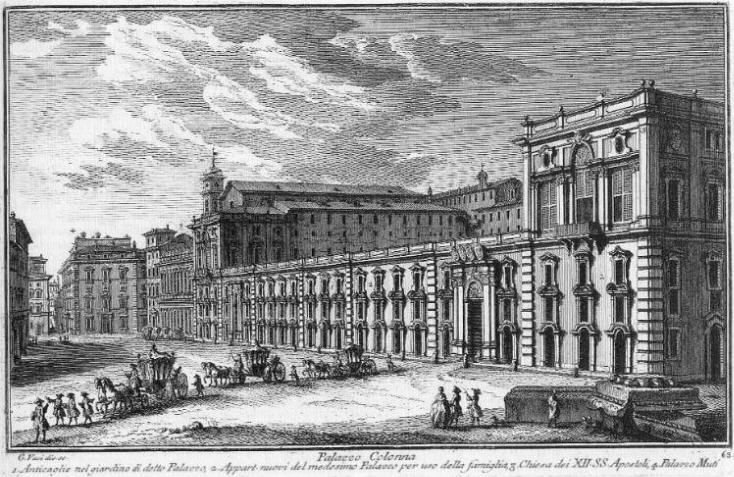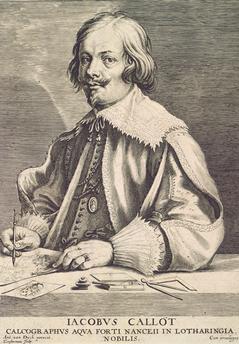|
Girolamo Muziano
Girolamo Muziano or Mutiani (c. 1532 – 1592), was an Italian painter, one of the most prominent artists active in Rome in the mid-to-late sixteenth century. Life He was born in Acquafredda, near Brescia, but active mainly in Rome. The accounts from the 16th to 20th centuries regarding Muziano's life said he began work under the tutelage of Romanino, an imitator of Titian. Yet, a nearly autobiographical story of Muziano written by his confessor (unpublished until 1954) indicates instead that Muziano was born in Brescia, and left this town as a young man, and that his first apprenticeship was under Domenico Campagnola and Lambert Sustris in 1544–46 in the town of Padua. He then spent time in Venice until 1549, but moved permanently to Rome about 1550. He was known there as ''Il giovane dei paesi'' (the young man of the landscapes), but although he continued to draw and paint landscapes throughout his career, he aspired instead to grand manner figure painting. He painted hi ... [...More Info...] [...Related Items...] OR: [Wikipedia] [Google] [Baidu] |
Girolamo Muziano, 1556 - Ressurreição De Lázaro
Girolamo is an Italian variant of the name Hieronymus. Its English equivalent is Jerome. It may refer to: * Girolamo Cardano (1501–1576), Italian Renaissance mathematician, physician, astrologer and gambler * Girolamo Cassar (c. 1520 – after 1592), Maltese architect and military engineer * Girolamo da Cremona ( fl. 1451–1483), Italian Renaissance painter * Girolamo della Volpaia, Italian clock maker * Girolamo Fracastoro (1478–1553), Italian physician, scholar, poet and atomist * Girolamo Frescobaldi (1583–1643), Italian musician * Girolamo Maiorica (c. 1591–1656), Italian Jesuit missionary to Vietnam * Girolamo Luxardo (1821–), Italian liqueur factory * Girolamo Masci (1227–1292), Pope Nicholas IV (1288–1292) * Girolamo Palermo, American mobster * Girolamo Porro (c. 1520 – after 1604), Italian engraver * Girolamo Riario (1443–1488), Lord of Imola and Forlì * Girolamo Romani (1485–1566), Italian High Renaissance painter * Girolamo Savonarola (1452–1498), ... [...More Info...] [...Related Items...] OR: [Wikipedia] [Google] [Baidu] |
Church Of The Gesù
, image = Church of the Gesù, Rome.jpg , imagesize = , caption = Giacomo della Porta's façade, precursor of Baroque , mapframe = yes , mapframe-caption = Click on the map for a fullscreen view , mapframe-zoom = 12 , mapframe-marker = religious-christian , coordinates = , location = 54 Piazza del Gesu, Rome , country = Italy , denomination = Catholic , website = , former name = , bull date = , founded date = , founder = , dedication = , dedicated date = , consecrated date = 1584 , relics = , status = Mother church of the Society of Jesus, titular church; titular church , functional status = Active , heritage designation = , designated date = , architect = , style = , years built = , groun ... [...More Info...] [...Related Items...] OR: [Wikipedia] [Google] [Baidu] |
Lernaean Hydra
The Lernaean Hydra or Hydra of Lerna ( grc-gre, Λερναῖα Ὕδρα, ''Lernaîa Hýdra''), more often known simply as the Hydra, is a serpentine water monster in Greek and Roman mythology. Its lair was the lake of Lerna in the Argolid, which was also the site of the myth of the Danaïdes. Lerna was reputed to be an entrance to the Underworld, and archaeology has established it as a sacred site older than Mycenaean Argos. In the canonical Hydra myth, the monster is killed by Heracles (Hercules) as the second of his Twelve Labors. According to Hesiod, the Hydra was the offspring of Typhon and Echidna. It had poisonous breath and blood so virulent that even its scent was deadly. The Hydra possessed many heads, the exact number of which varies according to the source. Later versions of the Hydra story add a regeneration feature to the monster: for every head chopped off, the Hydra would regrow two heads. Heracles required the assistance of his nephew Iolaus to cut off all of ... [...More Info...] [...Related Items...] OR: [Wikipedia] [Google] [Baidu] |
Cesare Nebbia
Cesare Nebbia (c.1536–c.1614) was an Italian painter from Orvieto who painted in a Mannerism, Mannerist style. Biography Nebbia was born in Orvieto. He trained with Girolamo Muziano, and under this master, he helped complete a flurry of decoration that was added to the Cathedral of Orvieto in the 1560s. Almost all the remaining work in Orvieto is now in the Museo del Duomo. Nebbia and Muziano became active in many of the premier projects in late 16th-century Rome. Along with Muziano's other assistant, Giovanni Guerra, they decorated the ''Gregorian Chapel'' in the St Peter's Basilica during the pontificate of Gregory XIII (1572–1585). Other Mannerist painters that were involved in this enterprise were Taddeo Zuccari, Taddeo and Federico Zuccari, Niccolò Circignani, and Hendrick van den Broeck (known as ''Arrigo Fiammingo''). The fresco decorations in ''Palazzo Simonelli'' in Torre San Severo (near Orvieto) have been attributed to Nebbia. In 1576, he painted a ''Resurrec ... [...More Info...] [...Related Items...] OR: [Wikipedia] [Google] [Baidu] |
Paolo Rossetti
Paolo is both a given name and a surname, the Italian form of the name Paul. Notable people with the name include: People with the given name Paolo Art * Paolo Alboni (1671–1734), Italian painter *Paolo Abbate (1884–1973), Italian-American sculptor *Paolo Antonio Barbieri (1603–1649), Italian painter * Paolo Buggiani (born 1933), Italian contemporary artist * Paolo Carosone (born 1941), Italian painter and sculptor * Paolo Moranda Cavazzola (1486–1522), Italian painter *Paolo Farinati (c. 1524–c. 1606), Italian painter * Paolo Fiammingo (c. 1540–1596), Flemish painter * Paolo Domenico Finoglia (c. 1590–1645), Italian painter *Paolo Grilli (1857–1952), Italian sculptor and painter *Paolo de Matteis (1662–1728), Italian painter * Paolo Monaldi, Italian painter * Paolo Pagani (1655–1716), Italian painter *Paolo Persico (c. 1729–1796), Italian sculptor * Paolo Pino (1534–1565), Italian painter *Paolo Gerolamo Piola (1666–1724), Italian painter *Paolo Porpora ... [...More Info...] [...Related Items...] OR: [Wikipedia] [Google] [Baidu] |
Frascati
Frascati () is a city and ''comune'' in the Metropolitan City of Rome Capital in the Lazio region of central Italy. It is located south-east of Rome, on the Alban Hills close to the ancient city of Tusculum. Frascati is closely associated with science, being the location of several international scientific laboratories. Frascati produces the white wine Frascati (wine), with the same name. It is also a historical and artistic centre. History The most important archeological finding in the area, dating back to Ancient Rome, Ancient Roman times, during the late Republican Age, is a patrician Roman villa probably belonging to Lucullus. In the first century AD its owner was Gaius Sallustius Crispus Passienus, who married Agrippina the Younger, mother of Nero. His properties were later confiscated by the Flavian imperial dynasty (69–96 AD). Consul Flavius Clemens lived in the villa with his wife Domitilla during the rule of Domitian. According to the ''Liber Pontificalis'', in ... [...More Info...] [...Related Items...] OR: [Wikipedia] [Google] [Baidu] |
Orvieto
Orvieto () is a city and ''comune'' in the Province of Terni, southwestern Umbria, Italy, situated on the flat summit of a large butte of volcanic tuff. The city rises dramatically above the almost-vertical faces of tuff cliffs that are completed by defensive walls built of the same stone, called ''tufa''. History Etruscan era The ancient city (''urbs vetus'' in Latin, whence "Orvieto"), populated since Etruscan times, has usually been associated with Etruscan Velzna, but some modern scholars differ. Orvieto was certainly a major centre of Etruscan civilization; the archaeological museum (Museo Claudio Faina e Museo Civico) houses some of the Etruscan artifacts that have been recovered in the immediate area. A tomb in the Orvieto Cannicella necropolis bears the inscription ''mi aviles katacinas'', "I am of Avile Katacina"; the tomb's occupant thus bore an Etruscan-Latin first name, Aulus, and a family name that is believed to be of Celtic origin (derived from "Catacos"). Th ... [...More Info...] [...Related Items...] OR: [Wikipedia] [Google] [Baidu] |
Palazzo Colonna
The Palazzo Colonna () is a palatial block of buildings in central Rome, Italy, at the base of the Quirinal Hill, and adjacent to the church of Santi Apostoli. It is built in part over the ruins of an old Roman serapeum, and it has belonged to the prominent Colonna family for over twenty generations. History The first part of the palace dates from the 13th century, and tradition holds that the building hosted Dante during his visit to Rome. The first documentary mention notes that the property hosted Cardinals Giovanni and Giacomo Colonna in the 13th century. It was also home to Cardinal Oddone Colonna before he ascended to the papacy as Pope Martin V in 1417. With his passing, the palace was sacked during feuds, and the main property passed into the hands of the Della Rovere family. It returned to the Colonna family when Marcantonio I Colonna married Lucrezia Gara Franciotti Della Rovere, the niece of Pope Julius II. The Colonna family's alliance to the Habsburg power likely ... [...More Info...] [...Related Items...] OR: [Wikipedia] [Google] [Baidu] |
Santa Caterina Dei Funari
Santa Caterina dei Funari is a church in Rome in Italy, in the rione of Sant'Angelo. The church is mainly known for its façade and its interior with frescoes and paintings. History The church is located where the Castro Aureo of the Circus Flaminius was located, built by Gaius Flaminius in 221 B.C. Prior to the 13th century, the seats of the surrounding semi-ruined amphitheater were used to dry the wares produced by the string- and rope-makers (''funari''), hence, the name of the church. Originally a small church dedicated to Santa Rosa di Viterbo was adjacent. The original church was a three-naved basilica, called "Santa Maria de Donna Rosa in Castro Aureo", named for the first time in 1192 in a document of Pope Celestine III. It was rebuilt in the 9th century with a single nave and dedicated to St Catherine of Alexandria and later also called Santa Caterina dei Funari. In 1534 Pope Paul III granted this church to St. Ignatius of Loyola, founder of the Jesuits. He establishe ... [...More Info...] [...Related Items...] OR: [Wikipedia] [Google] [Baidu] |
Accademia Di San Luca
The Accademia di San Luca (the "Academy of Saint Luke") is an Italian academy of artists in Rome. The establishment of the Accademia de i Pittori e Scultori di Roma was approved by papal brief in 1577, and in 1593 Federico Zuccari became its first ''principe'' or director; the statutes were ratified in 1607. Other founders included Girolamo Muziano and Pietro Olivieri. The Academy was named for Luke the Evangelist, the patron saint of painters. From the late sixteenth century until it moved to its present location at the Palazzo Carpegna, it was based in an urban block by the Roman Forum and although these buildings no longer survive, the Academy church of Santi Luca e Martina, does. Designed by the Baroque architect, Pietro da Cortona, its main façade overlooks the Forum. History The Academy's predecessor was the ''Compagnia di San Luca'', a guild of painters and miniaturists, which had its statutes and privileges renewed at the much earlier date of 17 December 1478 by Pope ... [...More Info...] [...Related Items...] OR: [Wikipedia] [Google] [Baidu] |
Jacques Callot
Jacques Callot (; – 1635) was a baroque printmaker and draftsman from the Duchy of Lorraine (an independent state on the north-eastern border of France, southwestern border of Germany and overlapping the southern Netherlands). He is an important person in the development of the old master print. He made more than 1,400 etchings that chronicled the life of his period, featuring soldiers, clowns, drunkards, Gypsies, beggars, as well as court life. He also etched many religious and military images, and many prints featured extensive landscapes in their background. Life and training Callot was born and died in Nancy, the capital of Lorraine, now in France. He came from an important family (his father was master of ceremonies at the court of the Duke), and he often describes himself as having noble status in the inscriptions to his prints. At the age of fifteen he was apprenticed to a goldsmith, but soon afterward travelled to Rome where he learned engraving from an expatriat ... [...More Info...] [...Related Items...] OR: [Wikipedia] [Google] [Baidu] |

.jpg)




